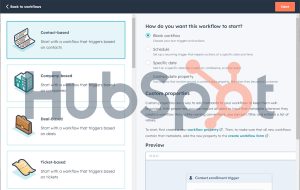Exploring the Power of Webinars in Content Marketing

Webinars have become a cornerstone of modern content marketing strategies. Why? Because they offer a dynamic platform for engaging with audiences, showcasing expertise, and driving conversions. In this blog post, we delve into the power of webinars in content marketing and how you can leverage this versatile tool to amplify your brand’s reach and impact.
From generating leads to nurturing relationships, webinars play a pivotal role in the digital landscape. By providing valuable insights and interactive experiences, webinars create a seamless connection between brands and their target audience. This engaging format allows for real-time interactions, fostering a sense of community and trust among participants.
But what makes webinars a game-changer in content marketing? The answer lies in their ability to deliver focused, in-depth content in a fast-paced, digestible format. By leveraging webinars, brands can showcase their thought leadership, engage with prospects on a deeper level, and drive meaningful actions that propel their business forward.
Throughout this post, we will uncover the key benefits of incorporating webinars into your content marketing strategy, explore best practices for hosting successful webinars, and provide actionable tips for maximizing the impact of your webinar campaigns.
Benefits of Webinars in Content Marketing
Webinars are a powerful tool in content marketing that offer a range of benefits for businesses looking to enhance their online presence and engage with their target audience. Let’s delve into the key advantages of incorporating webinars into your content marketing strategy.
Increased Audience Engagement
Webinars provide a dynamic platform for connecting with your audience in real-time, fostering a sense of community and interaction that traditional content formats may lack. Through live chat features and Q&A sessions, attendees can actively participate, ask questions, and provide feedback, creating a two-way conversation that drives engagement and builds rapport.
Establishing Authority and Credibility
Hosting webinars allows you to showcase your expertise, knowledge, and thought leadership within your industry. By delivering valuable insights, practical tips, and in-depth analysis on relevant topics, you position your brand as a trusted source of information, thereby establishing authority and credibility among your audience. This helps to strengthen brand loyalty and foster long-term relationships with customers.
Lead Generation and Nurturing
Webinars serve as an effective lead generation tool by attracting prospects interested in the content you offer. By requiring attendees to register for the event, you can capture valuable contact information and preferences, enabling targeted follow-up communication post-webinar. Follow-up emails, resources, and personalized content can further nurture these leads, guiding them through the sales funnel and converting them into loyal customers.
Incorporating webinars into your content marketing strategy can significantly enhance audience engagement, establish your brand as a credible authority, and drive lead generation efforts to fuel business growth and success.
Planning and Preparing for a Successful Webinar
When delving into the realm of webinars for your content marketing strategy, the planning and preparation phase plays a pivotal role in ensuring a successful event. Let’s explore the key components that contribute to a well-executed webinar.
Choosing the Right Topic and Format
Before diving into the logistics of your webinar, it’s crucial to select a topic that not only resonates with your target audience but also aligns with your overall content marketing goals. Consider what challenges or questions your audience is facing and how your webinar can provide valuable insights or solutions. Additionally, choose a format that best suits your content, whether it’s a presentation, interview, panel discussion, or a Q&A session.
Promoting Your Webinar Effectively
Promotion is key to driving attendance to your webinar. Utilize various channels such as social media, email marketing, blog posts, and partner collaborations to create buzz around your event. Craft compelling messages that highlight the value proposition of attending your webinar and create a sense of urgency to encourage registrations. Implement a strategic timeline for promotion leading up to the event to maximize reach and engagement.
Creating Engaging Content and Visuals
The success of your webinar hinges on the engagement level of your audience. Develop content that is informative, engaging, and visually appealing to keep participants captivated throughout the session. Incorporate storytelling elements, interactive polls, and multimedia components to enhance the overall experience. Visual aids such as slides, videos, and infographics can help convey information in a clear and compelling manner. Remember to tailor your content to the preferences and needs of your audience to ensure maximum impact and value delivery.
By investing time and effort into planning and preparing for your webinar, you set the stage for a successful and impactful event that not only educates your audience but also strengthens your brand presence in the digital landscape.
Executing a Webinar
Launching a successful webinar involves meticulous planning and flawless execution to ensure a seamless experience for both the host and participants. Let’s delve into the critical aspects that contribute to the effective execution of a webinar.
Technical Setup and Rehearsals
Before the actual webinar date, dedicate ample time to set up the technical aspects. Check your equipment, internet connection, and webinar platform to guarantee everything runs smoothly. Conduct thorough rehearsals to familiarize yourself with the controls, test audio and visual quality, and ensure a glitch-free performance on the big day.
Utilize a checklist to verify that all technical requirements are met, such as screen sharing capabilities, interactive tools, and attendee engagement features. By ironing out any technical issues beforehand, you can boost your confidence and deliver a professional webinar experience.
Engaging with Participants in Real-Time
Engagement is the cornerstone of a successful webinar. Foster interaction by encouraging participants to ask questions, share thoughts, and provide feedback throughout the session. Utilize polls, quizzes, and interactive Q&A sessions to keep attendees engaged and invested in the content.
Personalize your approach by addressing participants by name, acknowledging their contributions, and creating a welcoming atmosphere. By actively engaging with your audience in real-time, you can create a dynamic and interactive webinar experience that resonates with attendees.
Call-to-Actions and Follow-up Strategies
Incorporate strategically placed call-to-actions (CTAs) to guide participants towards the desired next steps, whether it’s signing up for a newsletter, downloading a resource, or registering for a follow-up webinar. Ensure that your CTAs are clear, compelling, and aligned with the webinar’s objectives.
After the webinar concludes, implement a robust follow-up strategy to nurture leads and maintain engagement. Send personalized thank-you emails, share webinar recordings and supplementary materials, and gather feedback to continuously improve future webinars. By following up promptly and maintaining communication with attendees, you can maximize the impact of your webinar and cultivate lasting relationships with your audience.
Executing a webinar successfully requires meticulous planning, seamless technical execution, active participant engagement, and strategic follow-up efforts. By mastering these key elements, you can elevate your webinar content marketing strategy and drive tangible results for your business.
Analyzing Webinar Performance
When it comes to evaluating the success of your webinars, analyzing performance metrics is crucial. By measuring engagement and attendance rates, you can gain valuable insights into how well your audience is responding to your content. Moreover, assessing conversion rates and return on investment allows you to determine the impact of your webinars on your overall marketing strategy.
Measuring Engagement and Attendance Rates
Measuring engagement and attendance rates provides a clear picture of how active and invested your audience is during your webinars. High engagement rates indicate that your content is resonating with viewers, while low engagement may signal a need for adjustments in your webinar strategy. Tracking the number of attendees and their level of participation throughout the webinar can help you identify areas for improvement and tailor future content to better meet audience expectations.
Assessing Conversion Rates and Return on Investment
Analyzing conversion rates helps you understand how effective your webinars are in converting attendees into leads or customers. By tracking the number of attendees who take desired actions post-webinar, such as signing up for a newsletter or making a purchase, you can measure the success of your webinar in driving conversions. Calculating the return on investment of your webinars provides insights into the profitability of your marketing efforts and helps justify the resources allocated to webinar production.
By diligently analyzing webinar performance metrics, you can continuously optimize your webinar strategy, enhance audience engagement, and maximize the return on investment of your content marketing efforts.
Integrating Webinars into Your Content Marketing Strategy
Webinars have emerged as powerful tools in modern content marketing strategies, offering a dynamic way to engage with audiences and deliver valuable insights. When integrating webinars into your content marketing approach, consider the following key aspects:
Aligning Webinars with Content Goals
Before diving into hosting webinars, it’s crucial to align your webinar content with your overarching content marketing goals. Identify the specific objectives you aim to achieve through webinars, whether it’s brand awareness, lead generation, thought leadership, or nurturing existing leads. By aligning your webinar topics and formats with these goals, you can ensure that each webinar contributes meaningfully to your content strategy.
Consider your target audience’s needs and preferences when designing webinar content. Tailor your topics to address common pain points, provide solutions, or offer valuable insights that resonate with your audience. By aligning your webinar content with your audience’s interests and needs, you can enhance engagement and foster stronger connections with potential leads and customers.
Repurposing Webinar Content Across Channels
Maximize the value of your webinar content by repurposing it across various channels. After hosting a webinar, consider repackaging the recording into bite-sized video clips, infographics, blog posts, or social media snippets. Repurposing webinar content allows you to extend its reach, engage audiences who may have missed the live event, and reinforce key messages across different marketing touchpoints.
Repurposing webinar content also helps drive organic traffic to your website and boosts SEO by providing fresh, multimedia-rich content for search engines to index. By leveraging different content formats and distribution channels, you can amplify the impact of your webinars and create a cohesive content ecosystem that resonates with your target audience.
Incorporating webinars into your content marketing strategy presents a valuable opportunity to engage with your audience in a more interactive and immersive format. By aligning webinar content with your content goals and repurposing it effectively across channels, you can amplify your brand’s reach, drive engagement, and nurture leads through compelling and educational content experiences.
Takeaways
Webinars are a dynamic tool in content marketing, offering a personalized and interactive platform to engage with your audience. By providing valuable insights and fostering real-time connections, webinars have the power to enhance brand visibility and establish authority in your industry. Incorporating webinars into your content strategy can drive traffic, generate leads, and ultimately boost conversions. Don’t overlook the potential of webinars to elevate your content marketing efforts and create lasting impact in the digital landscape.











